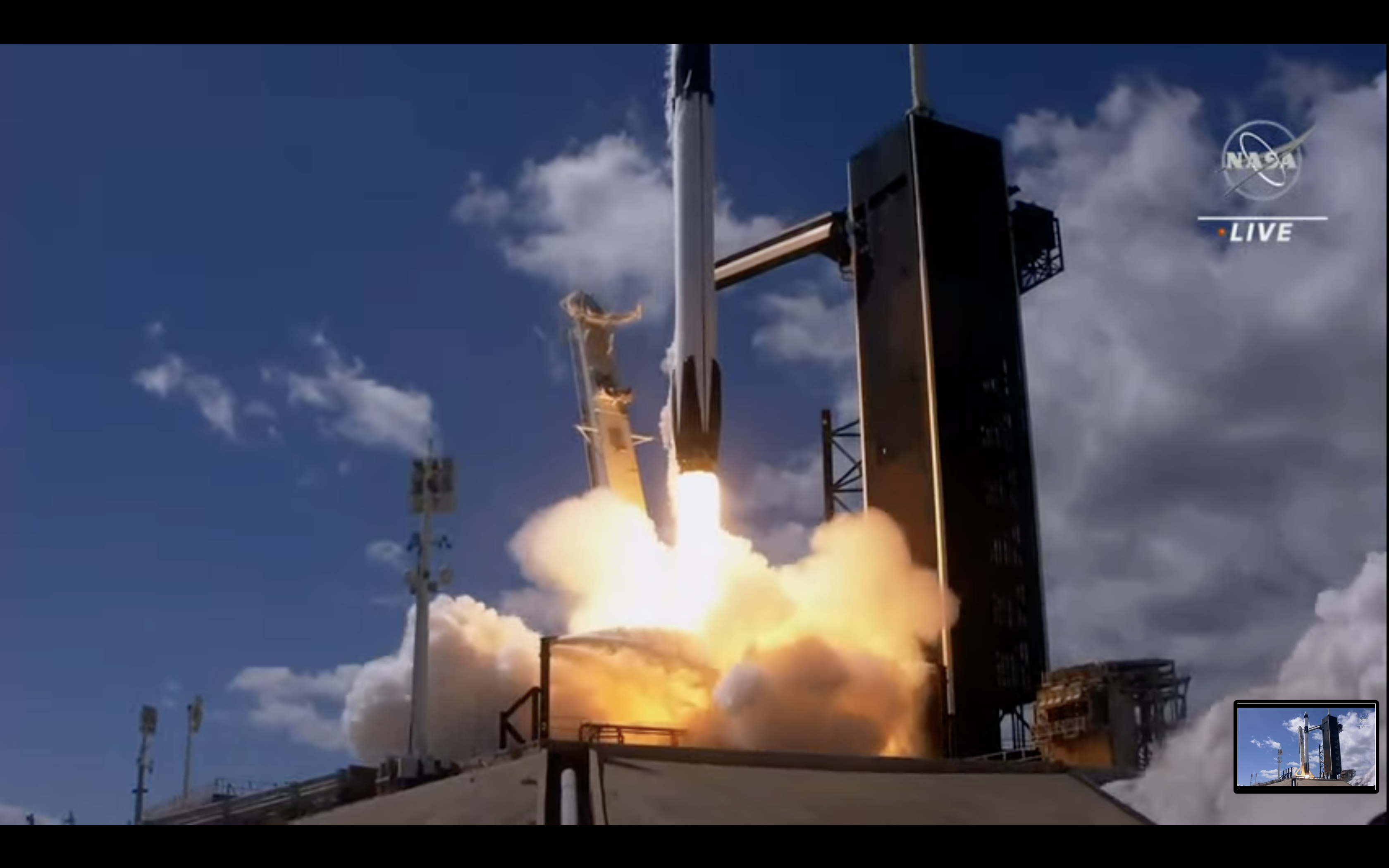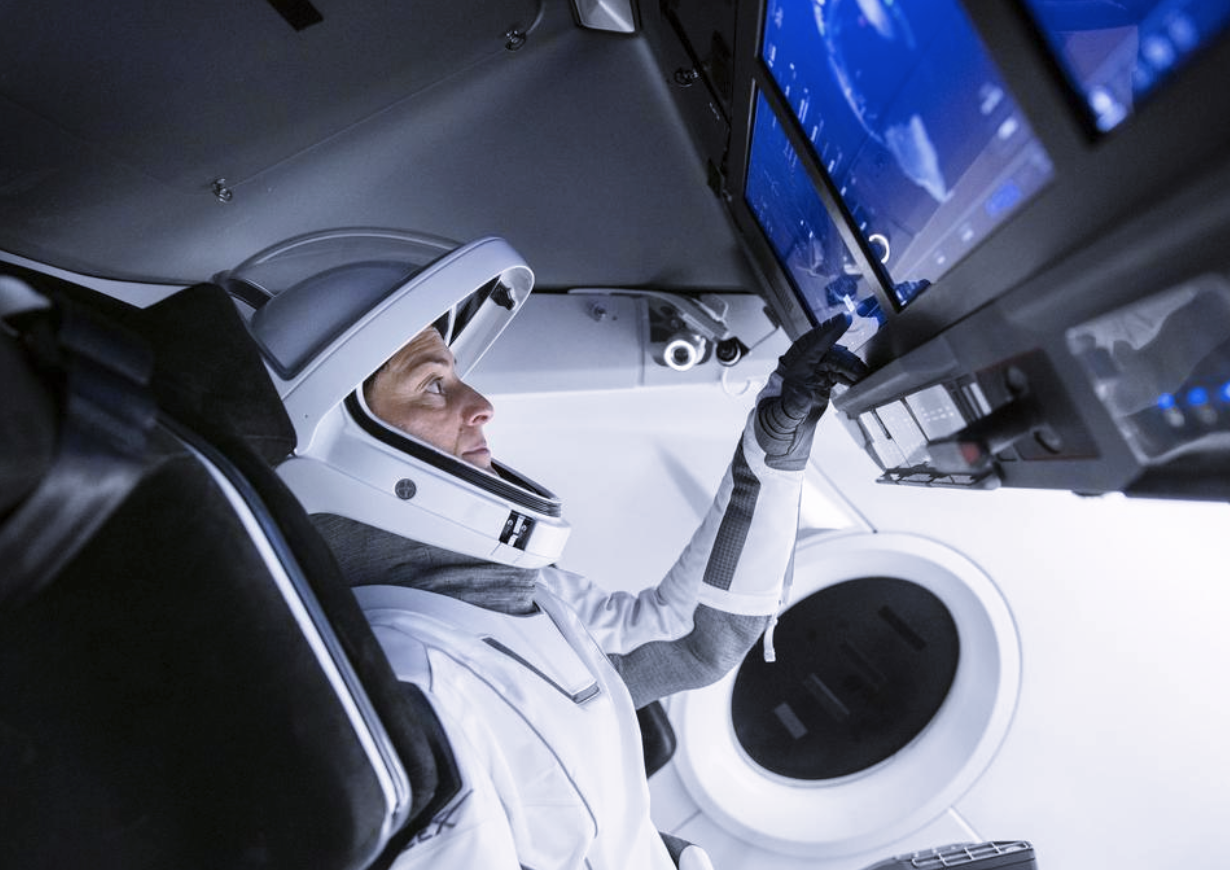
- Details
- By Levi Rickert and Neely Bardwell
Mann serves as the mission commander on NASA’s SpaceX Crew-5 space mission on the Dragon spacecraft named Endurance. The SpaceX Crew-5 mission was launched with four other astronauts on board on their way to the International Space Station. They are due to dock with the International Space Station almost 30 hours later at 4:57 EDT on Thursday.
Endurance carries two NASA astronauts, Mission Commander Nicole Mann and Pilot Josh Cassada, along with JAXA (Japan Aerospace Exploration Agency) astronaut Koichi Wakata and Roscosmos cosmonaut Anna Kikina, who will serve as mission specialists to the space station for a science expedition mission.
This is the fifth crew rotation mission with astronauts using the SpaceX Dragon spacecraft on a Falcon 9 rocket to the orbiting laboratory as part of the agency’s Commercial Crew Program.
NASA selected Mann to become an astronaut in 2013. She is a California native with a Bachelor of Science in Mechanical Engineering and a Master of Science in Mechanical Engineering. Mann is a Colonel in the U.S. Marine Corps and served as a test pilot in the F/A-18 Hornet and Super Hornet. Additionally, she deployed twice aboard aircraft carriers to support combat operations in Iraq and Afghanistan.
 Native American Nicole Mann (Wailacki of the Round Valley Indian Tribes) is commanding the spacecraft. (Photo/NASA)
Native American Nicole Mann (Wailacki of the Round Valley Indian Tribes) is commanding the spacecraft. (Photo/NASA)
In an interview with Native News Online in August, Mann described some of the work the crew plans to accomplish during their time at the station.
“And so when we're on board, there's about 250 experiments by scientific investigations that will be a part of everything from growing human cells to growing tomatoes in space. We'll also do a lot of maintenance on the space station and hopefully a couple spacewalks to upgrade some components outside the space station.”
She also spoke about how she did not think about becoming an astronaut until later in her career.
“I didn’t figure that out until a little bit later on in life as a young girl growing up in Northern California,” Mann said. “I was certainly interested in math and science, but I didn’t really realize that being an astronaut was in the realm of possibility. So it wasn’t until I was flying jets in the Marine Corps, looking at my future career options, that I started looking at potentially becoming a test pilot and, from there, an astronaut. It took me a little time to get it all figured out.”
Help us defend tribal sovereignty.
At Native News Online, our mission is rooted in telling the stories that strengthen sovereignty and uplift Indigenous voices — not just at year’s end, but every single day.
Because of your generosity last year, we were able to keep our reporters on the ground in tribal communities, at national gatherings and in the halls of Congress — covering the issues that matter most to Indian Country: sovereignty, culture, education, health and economic opportunity.
That support sustained us through a tough year in 2025. Now, as we look to the year ahead, we need your help right now to ensure warrior journalism remains strong — reporting that defends tribal sovereignty, amplifies Native truth, and holds power accountable.
 The stakes couldn't be higher. Your support keeps Native voices heard, Native stories told and Native sovereignty defended.
The stakes couldn't be higher. Your support keeps Native voices heard, Native stories told and Native sovereignty defended.
Stand with Warrior Journalism today.
Levi Rickert (Potawatomi), Editor & Publisher

